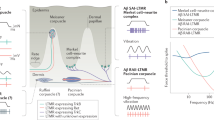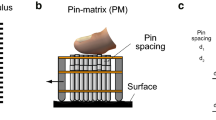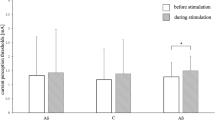Abstract
To take best advantage of cutaneous channels for communication, information must be translated into a form compatible with perceptual properties of the touch sense. To find whether such channels are effective other than as providing mere warning information or slow transliteration of speech, one needs systematically to vary cutaneous stimuli along temporal and spatial dimensions to determine the resolving power of the nervous system for complex patterns of cutaneous stimuli. In contrast to vibration, direct electrical stimulation of the skin has several advantages, but the disadvantage that pain ordinarily accompanies electrical stimulation of hairy body regions. The purpose of this investigation was to determine conditions of painless electrical stimulation of touch, by defining the stimulus conditions which affect pain and touch thresholds.
This is a preview of subscription content, access via your institution
Access options
Subscribe to this journal
Receive 51 print issues and online access
$199.00 per year
only $3.90 per issue
Buy this article
- Purchase on Springer Link
- Instant access to full article PDF
Prices may be subject to local taxes which are calculated during checkout
Similar content being viewed by others
References
Gibson, R. H., Paper presented to Eastern Psychol. Assoc., April 26–28 (1962).
Gibson, R. H., Proc. Intern. Cong. Tech. Blindness, New York, June 18–22 (1962) (in the press).
Author information
Authors and Affiliations
Rights and permissions
About this article
Cite this article
GIBSON, R. Electrical Stimulation of Pain and Touch Systems. Nature 199, 307–308 (1963). https://doi.org/10.1038/199307b0
Issue Date:
DOI: https://doi.org/10.1038/199307b0
Comments
By submitting a comment you agree to abide by our Terms and Community Guidelines. If you find something abusive or that does not comply with our terms or guidelines please flag it as inappropriate.



